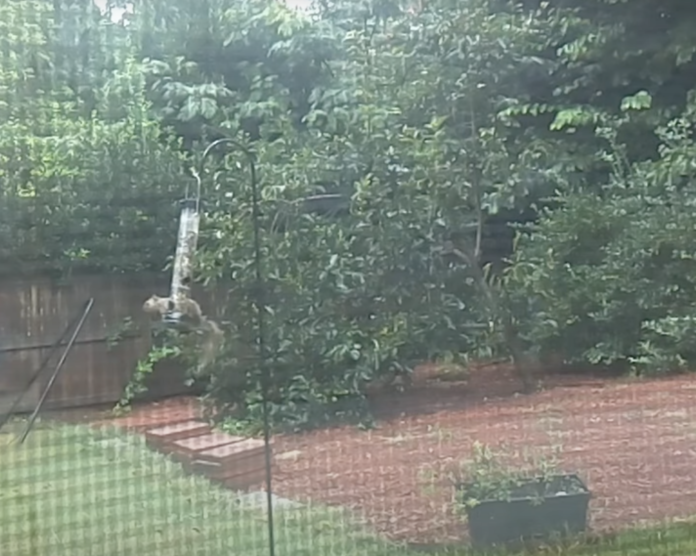eWEEK content and product recommendations are editorially independent. We may make money when you click on links to our partners. Learn More.
Artificial intelligence isn’t just changing the world — it’s soaking squirrels, too.
Washington Post journalist Jeremy B. Merrill created an AI-powered contraption called the Squirrel Soaker 9000. The DIY backyard build uses image recognition, cloud computing, and a Raspberry Pi to do one thing: spray squirrels off a bird feeder. He notes this does not harm the squirrels.
It’s absurd. It’s weirdly effective. And it’s a perfect example of how accessible AI tools are becoming, and how they’re quietly appearing in places beyond the data center.
The setup: Open source + a hose
The system is built around a fairly simple premise.
- Every 30 seconds, a camera takes a photo of the bird feeder.
- The image is analyzed by a fast.ai model running on AWS Lambda.
- If a squirrel is detected with over 70% confidence, the system activates a water sprayer, records video, and logs the encounter.
The results: Good, not 100%
The precision isn’t perfect — about 86.6% accurate, according to its creator, with the occasional mourning dove caught in the crossfire — but it has proven capable enough to significantly reduce feeder visits by squirrels.
“Fastai (a deep-learning library designed for researchers and practitioners) makes it really really easy — seriously, 13 lines of code — to cause an AI model to learn how to distinguish two kinds of pictures, by giving it examples of both kinds of pictures,” Merrill wrote in his blog post.
Edge AI in its purest form
The Squirrel Soaker 9000 hits on core themes that apply across enterprise AI adoption. It’s a great example of edge AI: lightweight models deployed on small hardware, making real-time decisions based on image data. No heavy compute, no GPU clusters, no massive labeled datasets. Just a Python script, a camera, and a clear objective.
For businesses exploring AI at the edge, the principle holds: local inference, fast reaction times, and autonomy without the need for constant human oversight.
More lessons to learn
The project underscores a key point for AI beginners: you don’t need flawless datasets or complex pipelines to build something that works. Fast iteration and “good enough” inputs can go a long way.
In addition, projects like the Squirrel Soaker 9000 may be built to solve a very specific problem with certain woodland creatures, but they underscore a serious point: AI no longer lives only in the lab.










 English (US) ·
English (US) ·